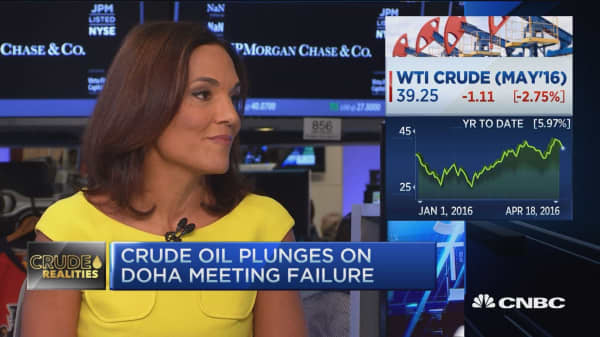This would be the first time since 1986 that investment has fallen two straight years. The plunge in rig counts worldwide, larger production declines in aging conventional oil fields, and project deferrals and cancellations are likely to result in non-OPEC supply contracting by 700,000 barrels per day this year versus a rise of 1.3 million barrels per day last year and of 2.4 million barrels per day in 2014. This would be the first non-OPEC contraction since 2008.
So, OPEC's plan in November 2014 to call on non-OPEC producers to do their part to rebalance the market is starting to bear fruit. But its objective of driving out high-cost producers, which would result in a fully balanced market, has not yet been achieved.
A balanced market at the end of the year is our base case for now, which should enable Brent oil prices to reach $55 a barrel in 12 months. That said, short-term downside price risks, the cost of rolling over futures contracts, and volatility still speak against taking any long positions in crude oil. Risks to our expected price recovery come from a sharp rise in OPEC supply and/or weaker oil demand from emerging Asia, which would push the market's rebalancing into next year.
Commentary by Giovanni Staunovo, a commodities analyst at UBS Wealth Management, which oversees $1 trillion in invested assets. Follow UBS on Twitter @UBS.
For more insight from CNBC contributors, follow
@CNBCopinion
on Twitter.







